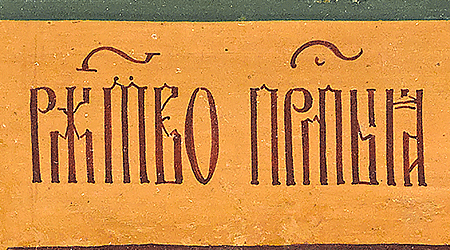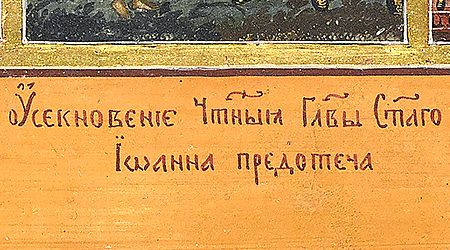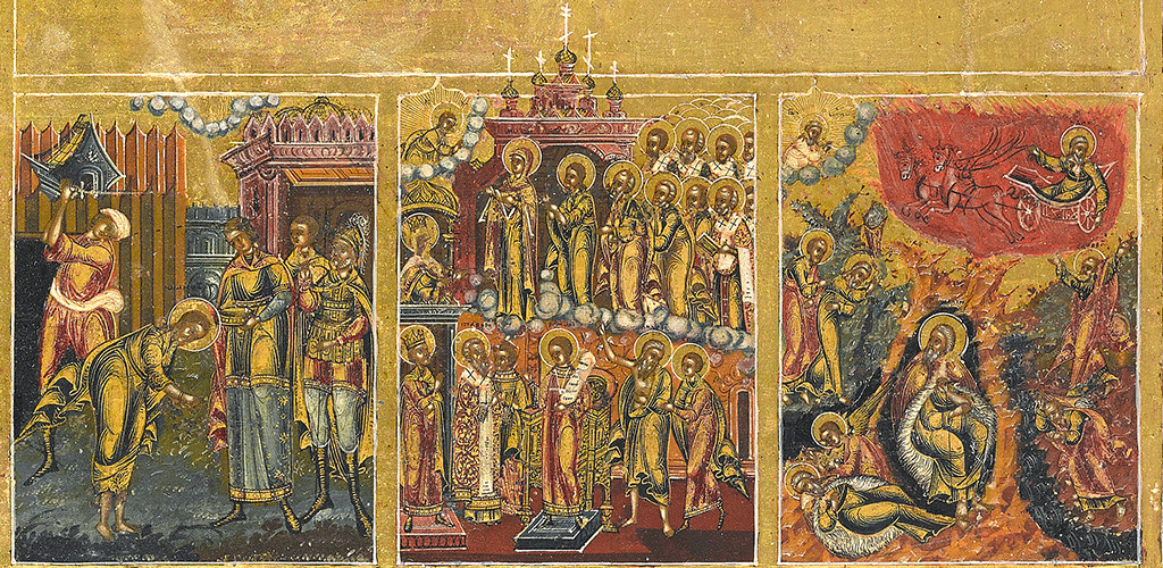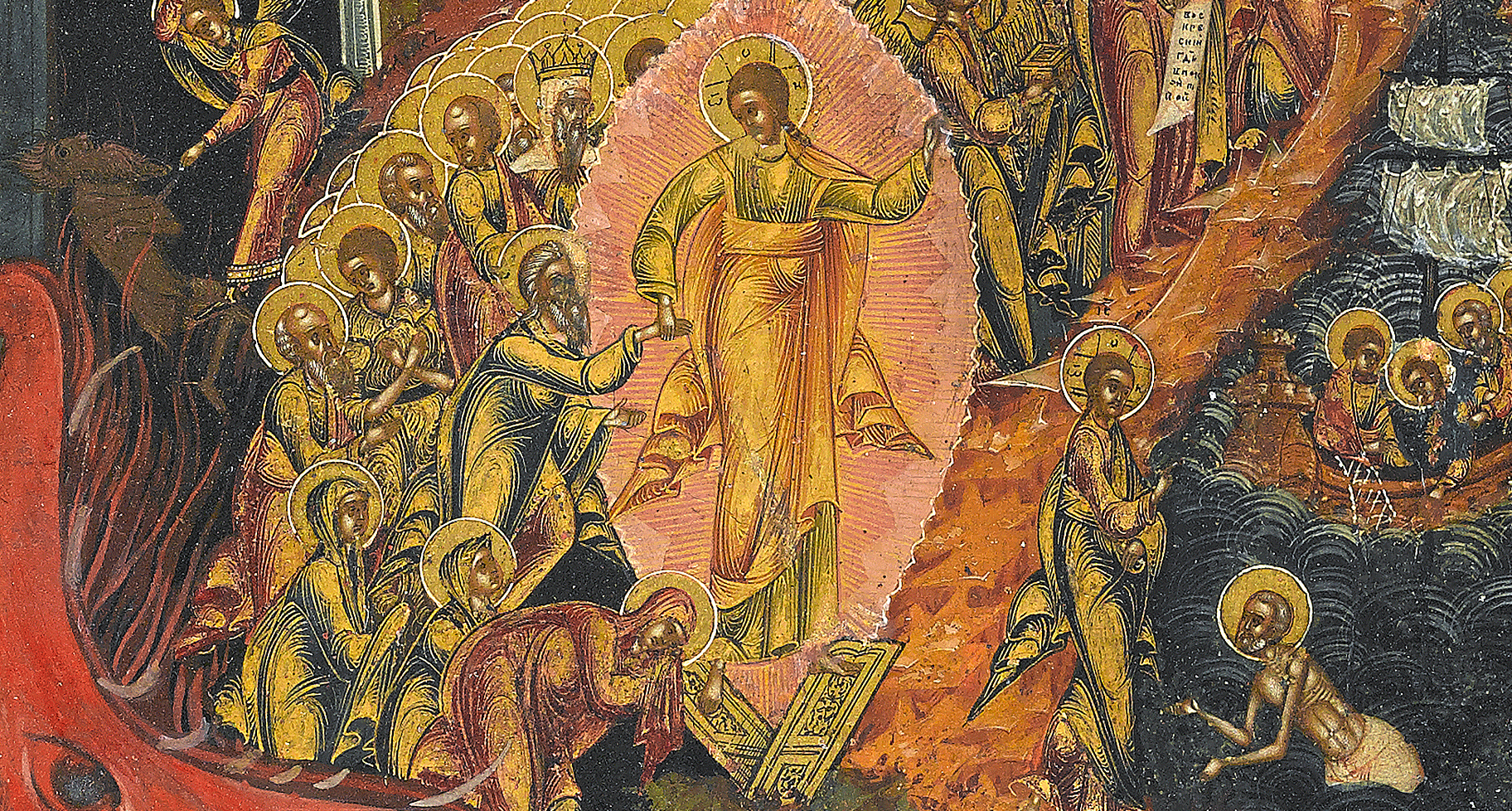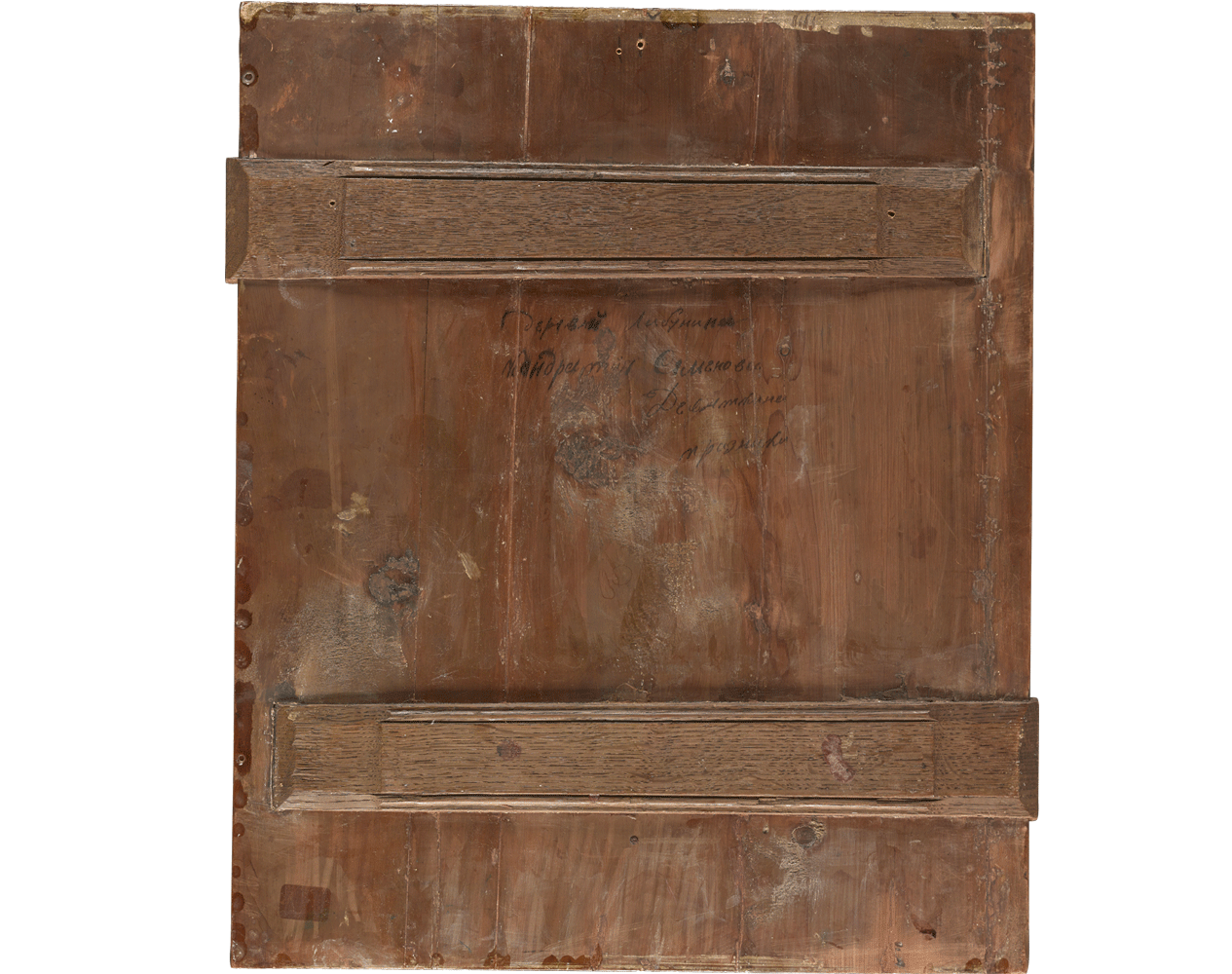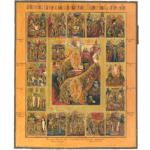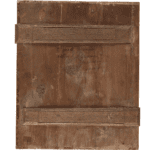Border scenes:
|
1. The Nativity of the Mother of God;
2. The Entrance of the Mother of God into the Temple; 3. The Old Testament Trinity; 4. The Annunciation to the Mother of God; 5. The Nativity of Christ; 6. The Presentation of Christ in the Temple; 7. The Baptism of Christ; 8. The Entrance of Christ into Jerusalem; 9. The Transfiguration; 10. The Ascension; 11. The Dormition; 12. The Raising of Lazarus; 13. The Beheading of St. John the Baptist; 14. The Intercession (Pokrov); 15. The Fiery Ascent of the Prophet Elijah; 16. The Elevation of the Holy Cross. |
|||||||||||||||||||
Since the earliest times, the theme of the Resurrection has been amongst the most popular in Christian art. The Resurrection scene depicted in the centrepiece was among the most popular subjects of the Russian religious art of the Imperial Period. The iconography usually includes numerous details and supplementary scenes from the Passion cycle and the events following the Resurrection. The composition is divided into two tiers. The upper scene is the “Rising from the Tomb”; Christ is depicted rising over the empty tomb, with guards shown asleep at the doorway. A procession of angels descends from the tomb to the Gates of Hades, where the Archangel Michael is shown trampling over Satan. The lower tier depicts the Harrowing of Hades, the descent of Christ into the depths of Sheol, and the liberation of humankind, who – following the Good Thief – rise to the Gates of Heaven. The composition traditionally includes several scenes that precede and follow the Resurrection. In the left-hand corner, we see the Crucifixion and the Apostle Peter at the Tomb of Christ. To the right – the Angel with the myrrh-bearing women; in the lower right-hand corner – the Revelation of Christ to the Apostles at the Sea of Galilee.
The border scenes include the great Church Feasts. Their selection reflects the popular local tradition, associated with Palekh. In the centre of the upper field is the Old Testament Trinity. The lower ranges are occupied by the scenes of the Fiery Ascent of the Prophet Elijah and the Elevation of the Holy Cross, which coincides with the dedication of Palekh’s two main churches.
The icon is a fine example of Palekh art. The artwork is among the best and most refined examples from the late 18th – early 19th century. Palekh masters were known for their skill in miniature painting, thorough execution of the faces and details, elegant proportions, elongated figures, a clear and refined composition. However, somewhat schematic treatment of figures and the abundance of gold hatching on the vestments indicate that the icon was painted at a later period, most likely in the 1820-1830s.
